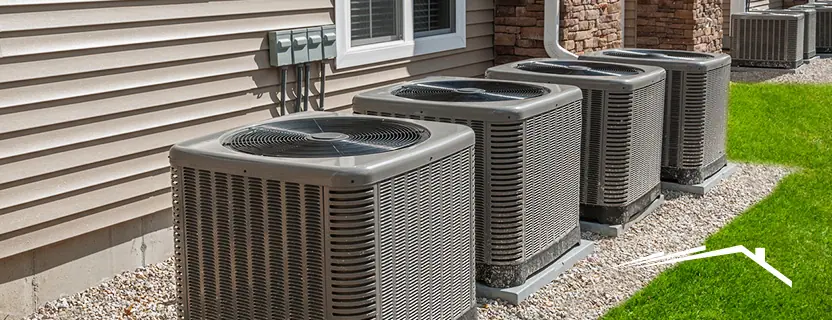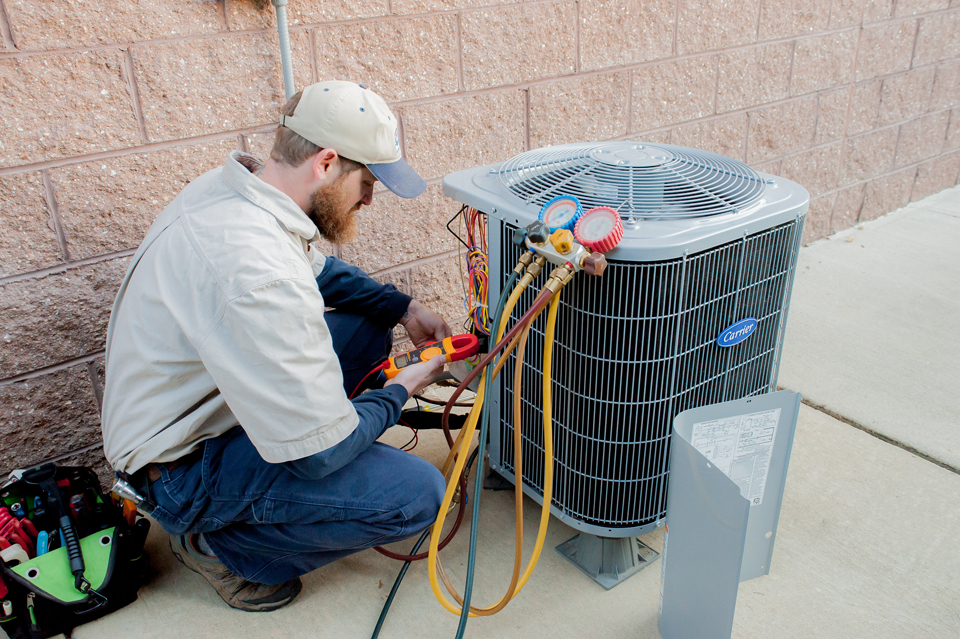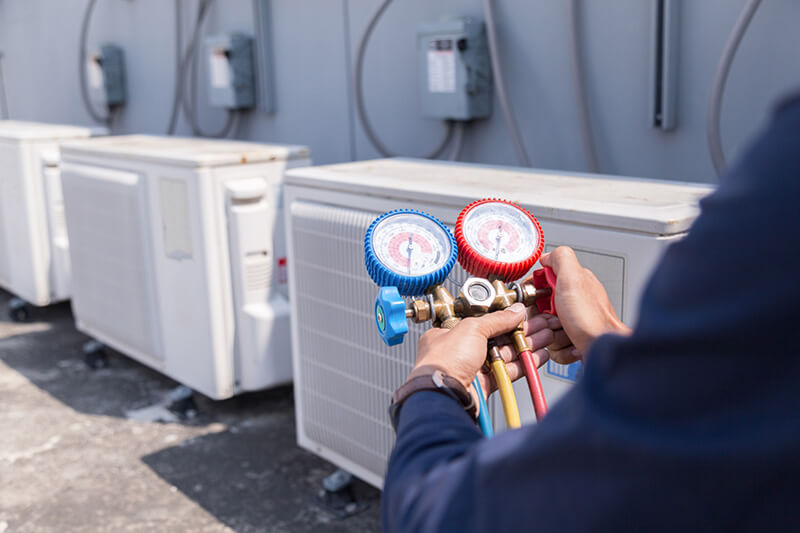Essential Insights About ductless mini splits Before You Upgrade
Essential Insights About ductless mini splits Before You Upgrade
Blog Article
How a Heatpump and Heating System Interact to Maximize Your Home's Heating Efficiency
Understanding just how a heatpump and furnace interact is essential for home owners looking for reliable heating solutions. Each system has its toughness, offering a balanced technique to home convenience. The heatpump succeeds in modest temperatures, while the heater provides rapid heat during severe cold. This synergy not only lowers energy costs yet also enhances the life expectancy of both home appliances. What factors influence this collaboration, and just how can house owners optimize their benefits?
Recognizing Heat Pumps: Exactly How They Function
Several individuals might be strange with their internal operations, heat pumps play a necessary duty in contemporary home heating systems. These devices operate by transferring warm from one area to another, using the principles of thermodynamics. In chillier months, a warmth pump essences warmth from the outside air, ground, or water, and transfers it inside your home to warm up the living room. Alternatively, during warmer months, it can reverse the process, functioning as an ac system by eliminating heat from inside to the outside.Heat pumps consist of an evaporator, growth, condenser, and compressor shutoff. The cooling agent within the system soaks up warmth as it evaporates at reduced temperature levels and stress. The compressor then increases the stress and temperature level of the refrigerant, enabling it to launch warm as it condenses. This effective procedure can significantly minimize energy usage compared to typical heating approaches, making heatpump a lasting selection for climate control in homes.
The Role of Furnaces in Home Heating
Heating systems play a necessary duty in home heating by giving a reputable source of warmth during the colder months. They operate by generating warmth with combustion or electric resistance, dispersing it throughout the home by means of ducts or glowing systems. The performance of a furnace is often determined by its Annual Fuel Utilization Efficiency (AFUE) ranking, which suggests exactly how successfully the unit transforms fuel into heat.Furnaces can utilize numerous energy sources, including gas, gas, oil, or electricity, allowing home owners to select one of the most ideal option for their demands. Unlike heatpump, which might have a hard time in extreme cool, heating systems keep consistent efficiency, making sure that interior temperature levels continue to be comfortable despite outside conditions. In addition, modern heaters often come outfitted with sophisticated modern technology, such as variable-speed blowers and wise thermostats, boosting their efficiency and responsiveness. This adaptability makes furnaces an important part in comprehensive home heating approaches.

Advantages of Utilizing Both Equipments Together
Combining the strengths of both heaters and warmth pumps can lead to a more reliable and effective home heating solution. Using both systems permits house owners to make the most of the heat pump's energy efficiency throughout milder temperatures while relying upon the heater for more severe cold conditions. This double technique can significantly minimize power costs, as heat pumps consume less electrical energy than traditional heating techniques when temperature levels are moderate.Additionally, using both systems together can boost comfort degrees in the home. Heatpump can offer consistent, also home heating, while heating systems can promptly elevate ambient temperatures when required. The combination of both systems can prolong the life expectancy of devices by decreasing wear and tear on each device, as they share the workload. Eventually, homeowners can take pleasure in a well balanced, cost-efficient heating service that readjusts flawlessly to varying weather, making certain a cozy and welcoming home throughout the wintertime months.
How Warmth Pumps and Furnaces Complement Each Other
They develop a corresponding heating system that optimizes performance and comfort when homeowners incorporate warm pumps and heating systems. Heat pumps operate by moving warm from the outdoors air or ground, making them extremely reliable in modest climates. They succeed throughout milder temperatures, supplying cost-effective heating. Alternatively, furnaces generate warmth via burning or electric resistance, supplying strong, prompt warmth during extreme cool conditions.The mix of these two systems permits dynamic modifications based on temperature changes. During warmer months or milder winter months days, the warm pump can take the lead, preserving energy and decreasing expenses. As temperature levels decrease, the heater can seamlessly involve, guaranteeing constant warmth throughout the home. This synergy not just enhances energy usage but likewise boosts the life expectancy of both systems, as each unit runs within its ideal performance range. Together, they develop a well balanced setting that adjusts to varying climate needs.
Enhancing Performance: Tips for Homeowners
Property owners can enhance their heating performance with numerous functional methods. Developing a regular maintenance timetable, integrating smart thermostat technology, and carrying out effective insulation and securing options are vital steps. These steps not just improve comfort yet additionally decrease power costs.
Regular Upkeep Schedule
To ensure optimal home heating effectiveness, establishing a normal maintenance schedule is crucial for any kind of home. Home owners need to prioritize routine inspections of both heatpump and furnaces to determine peak performance. This includes changing air filters every one to 3 months, as clogged up filters can greatly reduce efficiency. Furthermore, scheduling professional maintenance at the very least once a year permits professionals to determine and address prospective problems before they intensify. Property owners ought to additionally cleanse the warmth pump's exterior system to stop debris accumulation that can hinder air flow. By adhering to a routine maintenance routine, homeowners not just boost their home heating systems' effectiveness but also prolong their lifespan, causing higher comfort and lowered energy prices throughout the colder months.
Smart Thermostat Assimilation
Incorporating a smart thermostat right into a home furnace can significantly improve energy efficiency, especially as it enables precise control over temperature setups. These gadgets can learn the property owner's routine and preferences, instantly readjusting the temperature level to maximize comfort while minimizing power usage. As an example, they can reduce home heating during times when the home is unoccupied, reducing unnecessary usage. Many wise thermostats additionally supply real-time energy use data, enabling homeowners to make educated decisions regarding their heating habits. In addition, remote access via smart device applications permits individuals to adjust settings from anywhere, making certain the home is cozy upon return. On the whole, Check Out Your URL clever thermostat integration not just enhances convenience yet significantly adds to energy financial savings and performance.
Insulation and Sealing Solutions
Smart thermostats play an essential duty in power performance, but their efficiency can be substantially boosted by proper insulation and sealing options. Homeowners need to prioritize insulating floors, wall surfaces, and attics to minimize heat loss. Top notch insulation products, such as spray foam or fiberglass, can substantially enhance thermal resistance. In addition, securing voids around ducts, home windows, and doors protects against cool air infiltration and heat escape. Weatherstripping and caulking work techniques for addressing these leaks - heat pump service. Regular evaluations for air leaks, together with making use of blower door tests, can help determine trouble locations. By buying insulation and sealing, house owners can enhance the efficiency of their home heating useful reference systems, inevitably resulting in lowered power intake and lower utility expenses
Usual Misconceptions Regarding Heat Pumps and Furnaces
What misunderstandings surround heatpump and furnaces? Several people wrongly think that heatpump are inefficient in colder climates. In truth, modern-day heatpump are designed to run successfully even in reduced temperature levels, providing dependable heating throughout winter months. One more usual myth is that furnaces are constantly much more efficient than heatpump. This depends on the specific energy resources and effectiveness rankings of the systems in inquiry. Some might likewise think that utilizing both systems simultaneously is unneeded, yet actually, this combination can enhance home heating effectiveness, especially during extreme climate condition. In addition, people often presume that heatpump require continuous maintenance, when actually, they have similar upkeep requires to typical heater. By debunking these myths, house owners can make even more enlightened decisions concerning their home heating options, inevitably leading to improved comfort and energy effectiveness in their homes.
Upkeep Considerations for Combined Solutions

Often Asked Questions
Can Warm Pumps Job Efficiently in Exceptionally Cold Climates?
Heatpump can have a hard time in exceptionally cold environments due to decreased effectiveness and warmth extraction restrictions. Nonetheless, advancements in innovation have actually resulted in versions designed for better performance in such conditions, boosting their viability in severe atmospheres.
Just How Lengthy Do Warmth Pumps and Furnaces Generally Last?
Heatpump usually last 15 to twenty years, while heating systems have a life expectancy of 15 to thirty years. Regular upkeep can expand their longevity, making certain efficient operation and minimizing the requirement for premature substitutes.

What Is the Ordinary Cost of Putting Up Both Solutions?
The average expense of installing both a warm pump and a furnace commonly varies in between $5,000 to $10,000 - heat pump replacement ooltewah tn. Factors affecting this cost include system size, installment intricacy, and regional labor prices
Exist Tax Obligation Motivations for Utilizing Energy-Efficient Home Heating Systems?
Lots of house owners ask about tax blog here obligation motivations for energy-efficient heater. Numerous federal and state programs commonly supply credit scores or rebates, urging the fostering of sustainable technologies to decrease power intake and promote environmental responsibility.
Exactly how Do I Pick the Right Size Heatpump and Furnace?
Selecting the appropriate size heat pump and heating system includes determining the home's square video, considering insulation high quality, and examining regional environment. Consulting a professional can guarantee perfect system performance and energy efficiency based on particular demands. heat pump replacement ooltewah tn. Recognizing just how a heat pump and furnace work with each other is essential for homeowners looking for efficient heating solutions. In cooler months, a warmth pump essences warmth from the outdoors air, ground, or water, and transfers it inside your home to heat the living space. When homeowners integrate heat pumps and heaters, they produce a complementary heating system that makes the most of performance and convenience. Heat pumps run by moving warmth from the outside air or ground, making them highly reliable in modest climates. Warmth pumps can struggle in exceptionally cool climates due to reduced performance and warmth extraction restrictions
Report this page